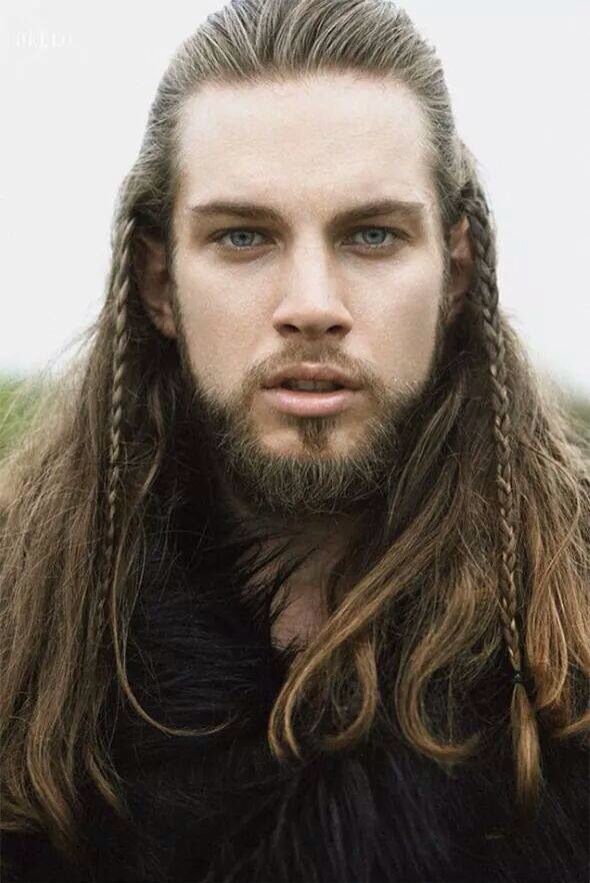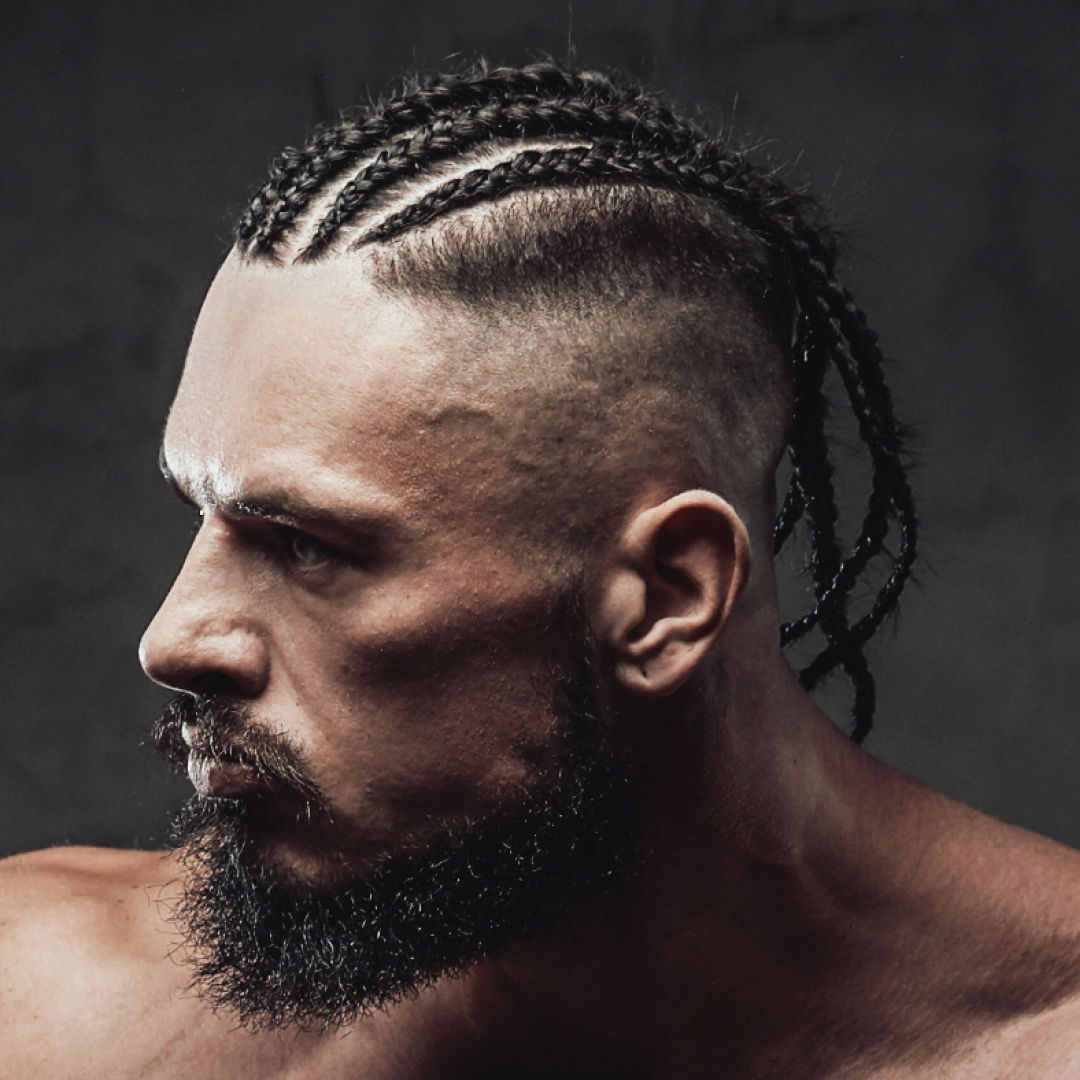Viking Hairstyles Male Braids: An Enduring Legacy of Style and Symbolism

The aesthetic of the Viking Age, characterized by its rugged individualism and fierce spirit, continues to captivate contemporary imagination. Central to this enduring appeal is the distinctive appearance of the Norsemen, particularly their elaborate hair arrangements. Far from being merely practical, the braided traditions of the Norsemen were imbued with deep cultural significance, reflecting social status, warrior identity, and personal expression. Today, these ancient Norse coiffures have experienced a significant resurgence, influencing modern fashion and offering a tangible connection to a powerful historical lineage.
Historical Context and Significance
During the Viking Age, roughly from the late 8th to the mid-11th century, the inhabitants of Scandinavia were renowned for their seafaring prowess, exploration, and distinctive cultural practices. Contrary to popular misconceptions of unkempt barbarians, archaeological evidence and historical accounts suggest that hygiene and personal grooming were highly valued. Combs, tweezers, ear spoons, and other grooming tools are frequently found in Viking graves, indicating a meticulous approach to appearance.
The practice of braiding men’s hair in the Viking period served multiple purposes. Practically, long hair, common among men of the era, could be cumbersome during combat, manual labor, or sailing. Braiding offered an effective solution, keeping hair out of the eyes and preventing tangles. This functional aspect was undoubtedly a primary driver for such hair arrangements.
Beyond utility, the masculine braided hair arrangements of the Viking Age were potent symbols of status and identity. The complexity and neatness of these styles could indicate an individual’s wealth, social standing, and attention to detail. Warriors, in particular, might have adopted specific braided patterns to signify their allegiance to a jarl or clan, or to distinguish themselves in battle. The ability to maintain intricate braids also suggested access to leisure time or the assistance of others, further underscoring social standing. Some historical interpretations suggest that certain braided styles were associated with specific deities or spiritual beliefs, serving as a form of devotion or protection. The act of grooming itself, often a communal activity, could also reinforce social bonds.
Types of Braided Styles
The historical record, while not exhaustive, combined with archaeological finds and artistic depictions, provides insights into the variety of braided styles prevalent among Norsemen. These ranged from simple, functional braids to highly elaborate and decorative designs.
One common style involved a single, thick braid extending down the back, often starting from the crown. This was a practical choice for men with long hair, offering maximum containment. Variations included braiding only a section of the hair, such as the top or sides, while leaving other parts loose or tied.
More intricate designs featured multiple smaller braids. These could adorn the sides of the head, often leading into a larger central braid or a ponytail. Sometimes, smaller braids were woven into the beard, creating a cohesive and formidable look. The integration of beard braids with head braids further emphasized a unified, well-groomed appearance.
The use of undercuts, where the sides and back of the head were shaved or cut very short, combined with longer hair on top that was then braided, was also a distinctive characteristic. This particular combination allowed for both practicality and a striking aesthetic contrast, highlighting the braided section. The longer hair on top could be fashioned into a single braid, multiple smaller braids, or gathered into a top knot secured by braids or ties.
Adornments played a significant role in enhancing these distinctive historical hair designs. Metal rings, beads made of glass, amber, or bone, and even small amulets were often incorporated into the braids. These embellishments not only added decorative flair but could also carry symbolic meaning, representing wealth, personal achievements, or protective charms. The meticulous attention to detail in these adornments further illustrates the importance placed on personal presentation.
Symbolism and Meaning
The characteristic braided hair of the era transcended mere fashion; it was a visual language. A warrior’s tightly woven braids might have conveyed readiness for battle and discipline, while a chieftain’s elaborately adorned coiffure could signal his authority and prosperity. The choice of specific patterns or the inclusion of Short Hairstyles For Chemo Hair A Comprehensive Guide To Managing Hair Loss During Treatment certain beads might have communicated clan affiliation, marital status, or even personal vows.
For instance, the act of cutting or shaving one’s hair or beard could be a sign of mourning, humiliation, or a significant change in status. Conversely, the careful cultivation and styling of hair, particularly through braiding, reinforced an individual’s place within the social hierarchy and demonstrated adherence to cultural norms. The connection between hair and identity was profound, with hair often seen as a manifestation of strength and vitality.
Modern Resurgence and Adaptations
In contemporary culture, the aesthetic of Viking-era braids has witnessed a remarkable resurgence. This revival is fueled by a renewed interest in Norse mythology, historical dramas, and a broader appreciation for distinctive, historically inspired fashion. Modern interpretations often blend historical accuracy with contemporary styling techniques, creating looks that are both authentic and current.
Popular culture, particularly television series and films depicting the Viking Age, has played a significant role in popularizing these iconic braided styles. This exposure has introduced a new generation to the visual appeal and historical depth of such intricate hair designs, inspiring many to adopt similar looks.
Contemporary adaptations frequently feature combinations of shaved sides with long, braided tops, intricate partings, and the incorporation of modern hair accessories. While the underlying principles of braiding remain, modern stylists often experiment with different textures, lengths, and placements of braids to suit individual preferences and hair types. The enduring appeal lies in the powerful, masculine, and often rugged aesthetic that these specific forms of braided hair convey. They offer a connection to a perceived strength, resilience, and a rich historical narrative.
Maintenance and Care
Maintaining the tradition of braided hair for men requires dedication and proper care to ensure hair health and the longevity of the style. Long hair, especially when braided, can be prone to dryness, breakage, and scalp issues if not managed correctly.
Regular washing with appropriate shampoos and conditioners is essential to keep the scalp and hair clean. Deep conditioning treatments can help maintain moisture and elasticity, preventing the hair from becoming brittle. When braiding, it is crucial to avoid excessive tightness, which can lead to tension alopecia or damage to the hair follicles. 90S Hairstyles Women Updo A Comprehensive Exploration Of Iconic Elevated Styles Loose, comfortable braids are preferable.
Detangling the hair gently before and after braiding is vital to prevent knots and breakage. Using a wide-tooth comb and working through tangles from the ends upwards can minimize stress on the hair. Furthermore, protecting the hair during sleep, perhaps with a silk pillowcase or a loose cap, can reduce friction and preserve the integrity of the braids. Regular trims are also beneficial to remove split ends and maintain overall hair health, contributing to a more polished and well-maintained appearance.
FAQs by Viking Hairstyles Male Braids
- What was the primary purpose of these ancient Norse coiffures? The primary purpose was multifaceted, encompassing practicality by keeping long hair contained during activities, signifying social status and identity, and potentially holding symbolic or spiritual meaning.
- Were all Norsemen required to wear braided hair? No, there is no evidence suggesting a universal requirement. Hair styles varied based on individual preference, social standing, and potentially regional or tribal customs. However, braided hair was a prominent and culturally significant New Half Up Half Down Hairstyles A Comprehensive Guide To Modern Elegance choice for many.
- How were these distinctive historical hair designs maintained without modern products? Norsemen utilized natural oils, animal fats, and plant-based cleansers for hair care. Combs made of bone or wood were essential for detangling and styling. Regular washing, though perhaps less frequent than modern practices, was also part of their grooming routine.
- Did only warriors wear braided hair? While braided hair was common among warriors, it was not exclusive to them. Men from various social strata, including farmers, traders, and chieftains, adopted these styles. The specific style or adornments might have differentiated a warrior from others.
- Is there a specific historical pattern for these specific forms of braided hair? While general styles are known (single braid, multiple braids, undercuts), specific “patterns” akin to modern intricate braiding techniques are less documented. Historical depictions suggest a range from simple to complex, often incorporating basic plaiting techniques.
Tips by Viking Hairstyles Male Braids
- Prioritize Hair Health: Healthy hair is fundamental for achieving and maintaining these distinctive styles. Regular conditioning, gentle handling, and minimizing heat exposure are crucial.
- Master Basic Braiding Techniques: Proficiency in fundamental braiding methods, such as three-strand, Dutch, and French braids, provides the foundation for more complex arrangements. Practice on oneself or others to develop skill.
- Consider Hair Length and Texture: The feasibility and appearance of certain braided styles are influenced by hair length and texture. Longer hair offers more versatility, while different textures may require specific products or techniques for optimal results.
- Utilize Appropriate Tools: A quality wide-tooth comb, detangling brush, hair ties that do not snag, and optional hair beads or rings are essential for styling and maintenance.
- Protect Braids During Sleep: To preserve the integrity of braids and prevent frizz or damage, consider sleeping on a silk pillowcase or loosely covering the hair with a silk or satin scarf.
- Maintain Scalp Hygiene: Braided styles can sometimes lead to product buildup or scalp irritation. Regular, gentle cleansing of the scalp, even between full washes, is important to prevent issues.
- Seek Professional Guidance for Complex Styles: For intricate or historically accurate braided styles, consulting a professional hairstylist experienced in braiding can provide superior results and personalized advice.
Conclusion by Viking Hairstyles Male Braids
The enduring appeal of these ancient Norse coiffures transcends mere fashion; it represents a profound connection to a rich historical and cultural legacy. From their practical utility in the harsh environments of the Viking Age to their deep symbolic meanings of status, identity, and belief, the masculine braided hair arrangements of the Viking Age were an integral part of Norse self-expression. The modern resurgence of these distinctive historical hair designs underscores a timeless fascination with strength, authenticity, and a connection to ancestral traditions. As these specific forms of braided hair continue to inspire contemporary aesthetics, they serve as a powerful reminder of the meticulous grooming practices and sophisticated cultural nuances that defined the Norsemen, proving that some styles are truly timeless.







More suggestion: Virtual Hair Styler Online Revolutionizing Personal Grooming And Style Exploration